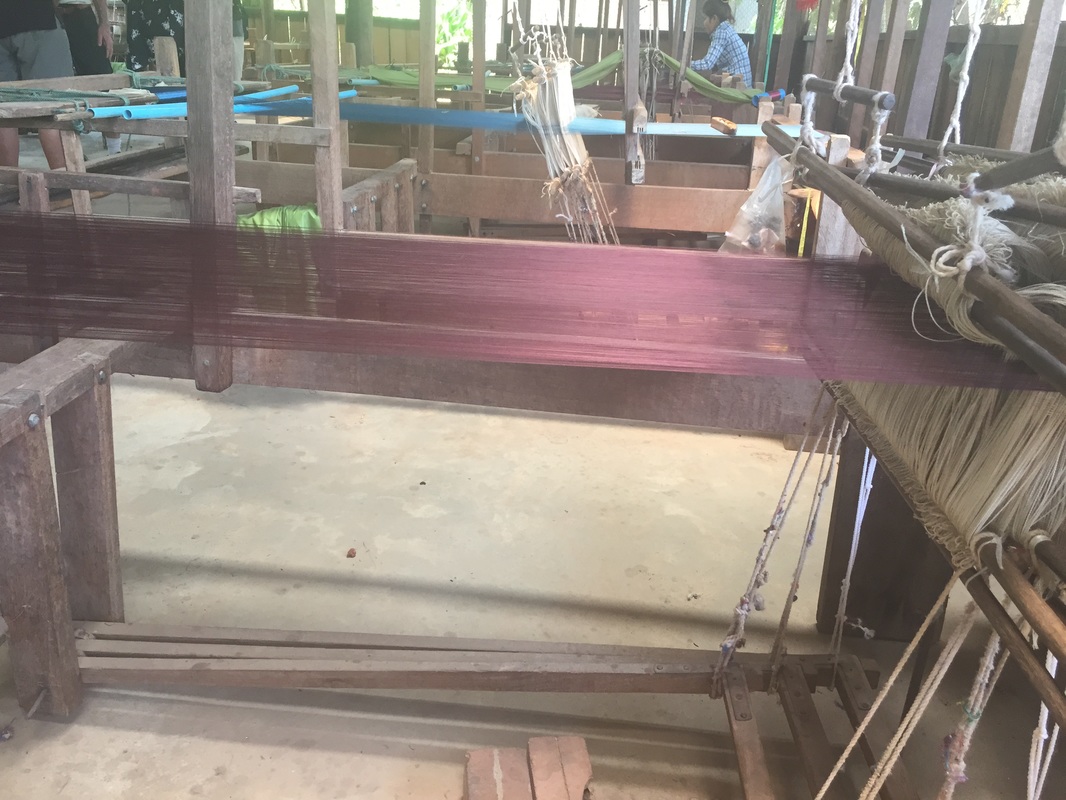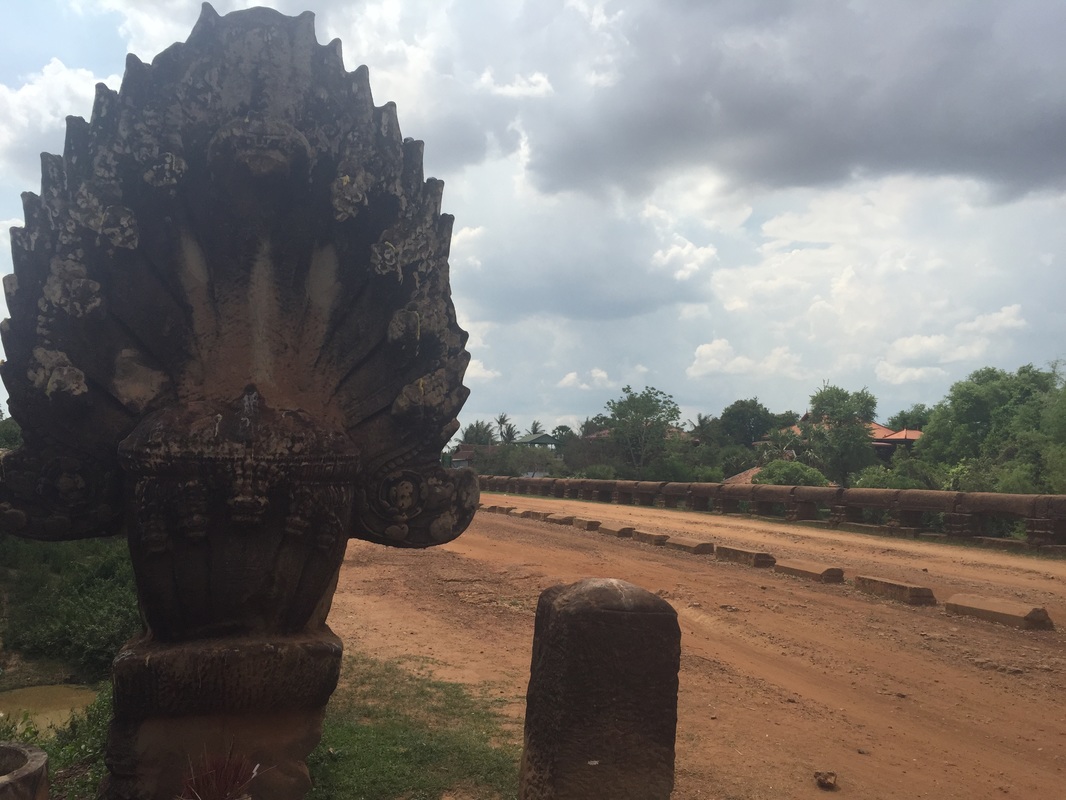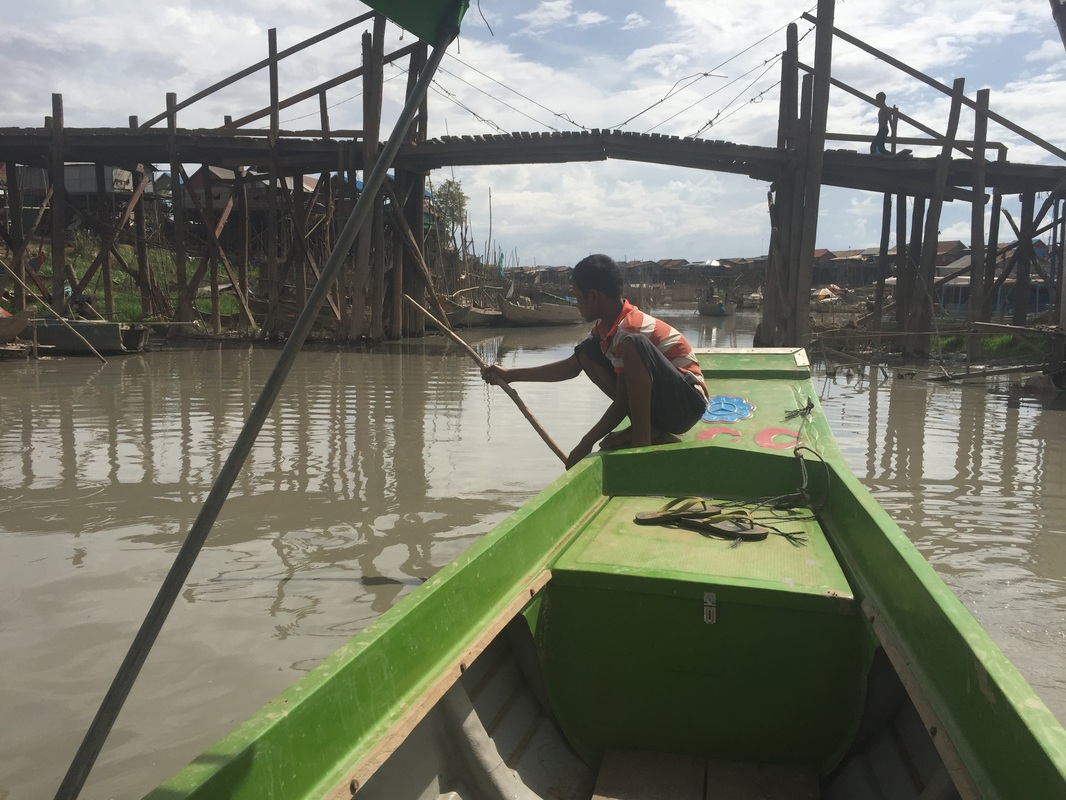SummaryAirport Rating N/A Reception of locals ***** Cost: £
The drive from Phnom Penh to Siem Reap is about 7/8 hours long, taking you through the beautiful Cambodian countryside. During the reign of the Khmer Rouge, government officials forced an urban depopulation, moving city dwelling Cambodians to work manual labour in the countryside, This had the inevitable consequence of causing large famines and many deaths. However, today, the countryside is full of farmers, ploughing their fields and tending to their crops. There was a lot of greenery during my trip and the vivid colours painted an amazing backdrop to this beautiful country. Tarantula'sAs we headed toward Tonle Sap, we made a quick stop at Skuon, also known as the spider village. The town is the capital of the Cheung Prey district and lies slightly southeast of the great lake. The town is famed for its local delicacy, fried tarantulas. I thought I've come this far, I might as well give one a try. It's a bit strange just to hold one because they seem so lifelike, coated in a spicy powder, it looks like they could start moving at any second. Someone told me to eat the legs first, so I did, and it was hairy. I went for the body next and its as gooey and disgusting as you would imagine. Sometimes you eat strange foods and the easy thing to say is...tastes like chicken. Well, this tasted like tarantula. It wasn't nice at all. The little kids in the village wanted to play a quick game of football, and lacking an actual football I decided to play with a can. The kids were full of so much energy, and in the summer sun, I was sweating after a few minutes. As soon as the kick around was over, it was back on the coach and the drive toward Tonle Sap continued. The floating villages on the banks of the great lake are one of Cambodia's greatest treasures. Whole communities have sprung up on the banks, making a living from fishing and farming. During the rainy season, the banks of the lake burst, flooding the surrounding plains. In response, the villagers build their houses on stilts. During the dry season, the lower floor is used for storage or as extra rooms, during the wet season, it fills up with water, giving the visual image of a floating village. Boat tripWe jumped into some boats and got a tour of the village, from a floating school, to shops and houses. The lake itself is used as a highway, not many villagers own cars or scooters but they all seem to have little boats that they use for transportation. As I had gone during the transition between dry and rainy season, the lake wasn't too deep and the propellors of the boat kept getting stuck in a number of different things that were on the bed of the lake. We were on the boat quite a few hours, as you pass all the schools and houses, you come to miles and miles of just open water and feeling of tranquility. I could see storm clouds on the horizon and rain falling, not too far away so we decided to head back to base before we got soaked. However, on the way back our boat broke and we were stranded in the open water for what felt like hours. I passed the time making ridiculous wagers with one of the American girls I was travelling to Siem Reap with, but after losing a few Cambodian Riel, the boat finally started and we were on our way again. We headed back to the shore and were shown the day's catch. A bucket load of catfish that the villagers would eat and also sell on. As with other parts of Cambodia, I couldn't help but notice just how many children were around. Every house we walked past would be filled with kids, shouting and waving at us, happy to see some new faces. I saw an actual football and decided to spend a couple of minutes playing football with a few of the kids. They don't seem to have much in the way of material possessions, but fashion toys out of anything they can find, and they all seem to have a great time. Again, in contrast with Cambodia's tragic past, it was great to see smiles on the new generation. Silk farmAfter the lake, we headed to the Santuk Silk farm, not far from Tonle Sap. Owned and run by an old American who fought in Vietnam, he mentioned he had fallen in love with the country and decided to move here once he retired. The farm hires young Cambodian women to weave silk as a way of empowering them and giving them financial independence and security. We were shown the silkworms that actually produce the silk and then the weaving machines and how they are operated. The workers are paid significantly more than other rural Cambodian women, whilst the older gentleman got to relax in a country he loved in a lifestyle that was relaxing. It seemed like a win-win situation. There were a few odd rules that wouldn't pass in the UK. Women are not allowed to get pregnant during their first year of employment, however when they do get pregnant they get generous maternity leave. However, this leave decreases with every child that is born and after 3 children, the women are entitled to no significant maternity leave. An improvement on other employers I'm sure, but still a fair bit of work to do. We decided to have a traditional Cambodian lunch at the farm, and were joined by a few uninvited guests, hundreds of flies. The food itself was delicious as long I kept my mate covered at all times. Our last stop around the vicinity of the lake, on the road to Siem Reap was an ancient bridge, built over a thousand years ago. For it's age, its done considerably well as it is still used as a working bridge, although most traffic tends to use a newer road built a few miles to the east. Like many other places in Cambodia, the bridge is guarded by a traditional naga. The bridge itself isn't particularly long, but the age of the bridge and the condition it is in makes you appreciate the structure that little bit more.
The Tonle Sap area is a naturally beautiful environment. Whole communities have sprung up around the lake to take advantage of the fertile plains and commercial benefits that it offers. Other communities have been there for centuries, relatively unchanged and it was great to get to see this rural way of life up close and personally. Comments are closed.
|
AuthorBritish Sikh, born in the Midlands, based in London, travelling the world seeing new cultures. Categories
All
|








 RSS Feed
RSS Feed